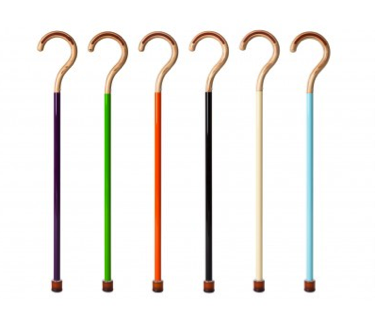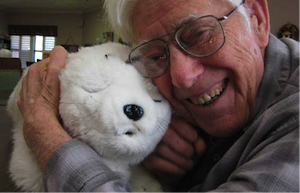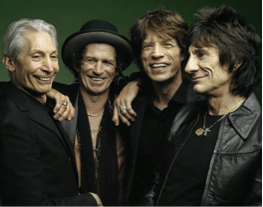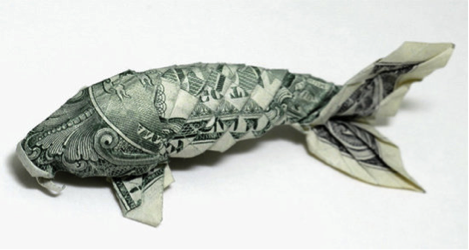The article is written by Cheryl Swanson, Principal at Toniq, USA
Elder Respect: Silent Generation (born 1925-1945)
These are our parents, grandparents, great-grandparents. They are part of a generation that is ageing, surviving and most of all, still living a pretty active lifestyle. Life expectancy in the US has risen to 75.7 for men and 80.8 for women, per the Census Bureau. In the UK, there are over one million drivers over the age of 80. Japan has one of the largest ageing populations in the world. Without a doubt, the world population is growing older and at a fast rate. This ageing phenomenon is spawning a focus on creating products and programming that makes getting older more comfortable, and to make senior living a little more fun – driving the trend for Elder Respect. Just because they are “old”, doesn’t mean they don’t appreciate independent living, great design and high efficiency products. There is no “cocoon” pool or magic pill, but there are well-designed, high-tech gadgets, sleek, modern devices, and new programming (with the help of Betty White, of course). The reality is that older people just want simple products for everyday life that are easy to use in and out of the house. The future for them is right now and here are some of our favorite products developed specifically for this generation.
Omhu Cane…why shouldn’t the cane have some style? The Omhu cane is made of a high-strength, bicycle–grade aluminum that can hold up to 300lbs, has a patented cushioned rubber tip for stability, ergonomic design, and comes in 6 great colors! We love that Omhu was founded on the belief that “life is imperfect and beautiful”. The orange cane is so this season!
Meet Paro. Paro is a soothing therapeutic “robot” seal. Paro is being used as a companion to the elderly around the world. Paro is currently in its 8th generation of design since it’s first introduction in 2003. Paro is a multi-sensorial companion that helps lower blood pressure, improve moods, and creates a sense of warmth, stability, laughter and conversation. “Paro has five kinds of sensors: tactile, light, audition, temperature, and posture sensors, with which it can perceive people and its environment. With the light sensor, Paro can recognize light and dark. He feels being stroked by tactile sensor, or being held by the posture sensor. Paro can also recognize the direction of voice and words such as its name, greetings, and praise with its audio sensor.” There are elderly couples that treat Paro like a child, bringing Paro everywhere they go, even to a sushi bar! Check out the video “living with Paro”.
The I-Pot is one of our other favorites, but unfortunately it is only available in Japan. In Japan, most homes keep an electric hot water kettle that is left on constantly for tea and soups. What makes the I-Pot unique is that it is connected to Japan’s NTT DoCoMo network and sends texts and emails. Why? Because of Japans growing elder population, many elderly people live alone; in this era, family members often live far away, even in other countries. This simple kettle sends a text or email to family members whenever it is used – usually resulting in a daily pattern. When family members don’t receive the message based on the regular use, they know to check on the elderly member. What makes this successful is how easy it is for the elderly person, they don’t have to do anything out of the ordinary or learn a new process, just go about their regular daily routine. There is a monthly fee for the service, but it’s worth the peace of mind for family members.
Booming Boomers: Baby Boomers (born 1946-1965)
A “shockwave” generation, once the largest in US history at 75 million, is starting to enter the “golden boomer” era. But these boomers are not sitting still. Boomers are the new 30’s. According to Pew Research, baby boomers believe that old age starts at 72 and most admit to feeling younger than their real age. Here are some other Booming Boomer trends…
Rocking Boomers. There are rumors of The Rolling Stones performing at the London Olympics in 2012 followed by a 50th reunion world tour in 2013. Mick Jagger and Keith Richards, both early cusps of the generation, are 69 years old this year and still rocking out! Furthur, the Grateful Dead sans the late Jerry Garcia, just played 8 sold out nights at the Beacon in NYC. Phil Lesh and Bob Weir are both in their 70’s! The core audiences at these concerts are mostly Booming Boomers!
Tech Boomers. Boomers never fell behind on technology – they were the original incubators for technology and as it happens, they make up 40% of all Internet users. Those 56-65 years of age spend approximately 36.5 hours a month online. And in 2010, Boomers spent over $2.9 trillion, yes trillion dollars, shopping online (Silvers Summit). They are also one of the largest active groups on Facebook; using it as a way to stay connected with family members. And according to Nielsen, Americans between the ages of 55-64 are adopting smartphones at a faster rate than any other age group. What’s even more surprising is that 39% of all gamers are over the age of 50 according to ESA (Entertainment Software Association). Oh and we can’t forget to mention the influx of online dating by Boomers. In the US, there are a handful of online dating sites strictly for the 50+ age group. Boomers need love too!
Booming Elite Consumers. Although the economy and recession have affected shopping behaviors, Boomers are still core consumers. Retirement may be delayed, but that also means more disposable income. Entertainment, travel, and home renovations make up a huge portion of Boomer spending. Boomers on average spend $2 trillion a year. This is not to say all Boomers are wealthy, but 1 in 10 belong to a group of Boomer Elites, according to Focalyst, that make up a huge portion of this spending. Compared to their Boomer peers, over the next 12 months, Elites plan to spend 110% more on household items, and 60% more on home improvement, they will spend 62% more on taking trips this year and will keep up with the latest in technology, spending nearly three-quarters more (73%) than their peers on technological products. This is definitely a core consumer group that cannot be ignored in the marketplace.
Generation Innovation: Gen-X (born 1965-1984)
John Hughes is the epitome of gen-x. His films depicted the characters of the generation – from the preppies to the punks, the misfits to the frat boys. Gen-X’ers were the first to be left to fend for themselves, creating a generation of rebellious geniuses who broke rules and inspired innovations in music, television, technology, fashion, consumerism, and just about everything in-between. Now this group is dealing with the effects of the economy in very hard ways…from layoffs, high unemployment rates, and a political system that seems to look towards future generations rather than deal with the current generation in need of healthcare, jobs, and security. Gen-X’ers have to get creative to survive, hence, Generation Innovation.
Passions to Profits. Many Gen-X’ers were unfortunately forced to rethink their lives, futures and careers because of the economy. Out of frustration, Gen-X’ers have become creative inventors and entrepreneurs – turning passions into profits. More “mom & pop” boutiques and shops have opened up in the last several years because these Gen-X’ers took the signs of the times as a cue to pursue their passion. From bakeries to cafes, mobile food vending to concept shops, product innovations to start-up fashion labels, Gen-X is not afraid to take chances and risks with their “just do it” attitude. Nearly two-thirds of entrepreneurs start their business between the ages of 25 and 44 years of age, according to The Entrepreneur Café. Recently, at the New Orleans Entrepreneur Week 2012, which includes a full week of business seminars, a lending fair, new media training, networking, and more, the attendees were a mass of Gen-X’ers looking to launch new businesses. And according to the Center for Talent Innovation (CTI), 37% of current Gen X have “one foot out the door” and are looking for new positions or change of careers, a path to turning their Passions to Profits.
Gen-LuxeY: Millennials (born 1982 – 2002*years for this generation vary slightly overlapping with gen-x)
We know that Millennials are a force to be reckoned with…a generation outnumbering baby boomers and quickly reaching their spending capacity. Brands want them; marketers target them, yet they are the least brand loyal generation by far. They are experimenters and are willing to try new brands frequently. Perhaps this is due to the bombardment of every brand in every category trying to “speak to them” and get a piece of their wallet ever since they were babies. They have been called spoiled, over-protected and even lazy. But surprisingly, they are becoming the largest spenders in the luxury category. This is not just in the US, but also globally.
In a report by American Express Business Insights (AEBI), Generation-Y shoppers (aged 18 to 34) in the US increased their spending on full-price luxury fashion by 33% and luxury jewelry by 27% in 2011, the biggest gains in spending for any age group. This spending habit is being mirrored in other countries as well.
The sleeping giant in China has awoken to breed a new generation of young millionaires. 45% of Chinese shoppers who buy luxury goods are between the ages of 18 to 34. Full-service luxury tour groups arrange everything from visas to first class travel and accommodations to special shopping events in NY for these young Chinese millionaires. Montblanc, Diane Von Furstenberg, Bergdorf Goodman, and Estee Lauder just to name a few, have offered special events and private shopping for these young women.
This trend is also evident in Japan and Britain as well – 37% of luxury purchases in Japan are by 18-34 year olds and 28% in Britain.
The Gen-LuxeY generation is aspirational to all markets. Top celebrities with huge commercial impact like Justin Beiber, Lady Gaga, Taylor Swift, Hillary Duff, the Olsen Twins, are all Millennials. It could be Louis Vuitton today and Chanel tomorrow, a $3,000 bottle service at a NY club or a $1,000 a night stay at a luxury hotel in Paris. Millennials have proven that they are a big part of the recessionary rebound in the luxury market.
If you would like to know more about trends or Toniq, please email us at info@toniq.com or tweet us @brandeffervesce.
About the Author
Ms. Swanson founded Toniq in 1999 after leading several design firms to world-class status with her emotions-based, visual approach to brand strategy development. At Toniq, she continues to evolve her strategic expertise by seeking new ways to connect with consumers.
Swanson’s years of trend tracking, design management and research have coalesced in a theory of “Brand Effervescence ™” an innovative approach to brand building. This image-based approach is a synthesis of cultural anthropology, consumer trends research, marketing and design, and a study of the psychology of symbolism and color.






